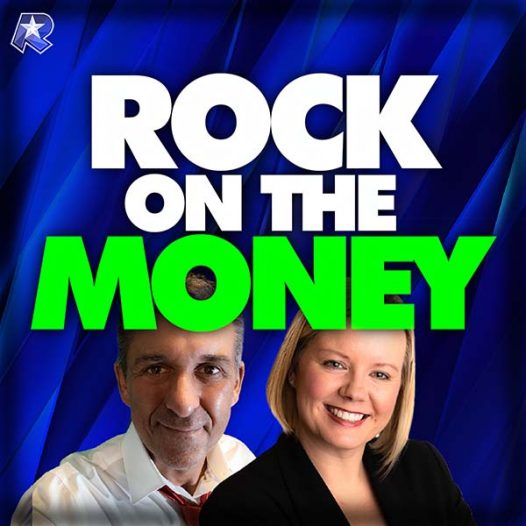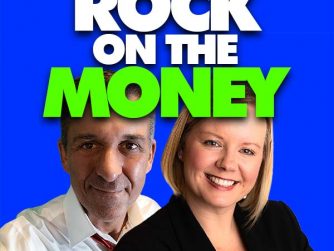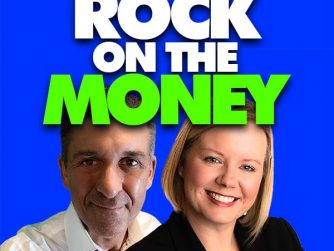- Wendy from PA wants to know if its a good idea to take the lump sum for her pension or lifetime benefit
- Retirement is a number and not an age. Here’s how to figure out what your number is and how to get it
- Savvy Savings with Amanda on how to save when planning a funeral
What is your retirement number and how to get it
- Through our coaching we have heard from many of you that you are retiring at age 65.
- What we are coaching you is that retirement is not an age – it is a number. That number is the amount of money you have saved in retirement accounts. These are accounts that are still invested making a given % per year over time.
- The media including advertising makes being a so-called millionaire about the watches, cars, boats, houses. What people really want is the freedom. The freedom of worry.
- 67% of wealthy people stated they weren’t going for wealth while building up their nest egg. They were looking for that freedom of worry. To not be concerned about money every day.
- So what is that retirement number of the TARGET.
- I have one person who I have been coaching that has 14 rental properties – most paid for (keyword most) – generating rental income. However, he has about $120,000 in retirement accounts.
- Here is the generally accepted method of determining your number based on the newer 25 times your annual budget:
- Determine your desired retirement spending budget
- Multiply your annual spending by 25. This is based on the Trinity Study which states if you have 100% stocks or even 70% stocks and 30% bonds you can withdrawal 4% of your gains per year and that will last you in excess of 30 years.
- Some people I know use 30 times annual spending and others use a smaller amount than 4% for their calculations.
- Calculate all of your income sources including Social Security, pensions, rental income, side hustles.
- Subtract the annual passive income annual budget expenses. Take that result and multiply by 25 and you have your retirement number.
- For example, lets say my annual budget expenses totals $70,000. My annual passive income is $10,000. The result of subtracting the passive from my budget is $60,000. Multiply $60,000 by 25 and you get a retirement number of $1,500,000.
A previous method had used 10-12 times your annual budget, but several studies have shown that wasn’t working out too well.
- Dave Ramsey Method
- Basic math with all things working in harmony meaning no medical situations (cancer, heart), no divorce, no disasters, etc.
- Dave Ramsey promotes a simple rule of thumb for figuring out your ‘number’ in retirement accounts
- Dave believes in being able to live on 8% of your nest egg. For this to work your account must continue to average 12% per year long term even in retirement and that would help you cover the rate of inflation on the high side of 4%.
- So for example: If you want to live on $40,000 a year you would need $500,000. To do the simple math you take the amount you want to live on and divide it by .08 and that will give you the amount you should have saved.
How are we going to get there
- Baby Steps
- Pay off all your consumer debt
- Have that 3-6 months emergency fund in an online savings account
- Save initially 15% of your paycheck – keyword initially
- Pay off the house
- Revert back to your savings and increase that by maxing our your 401K, IRA and then into other investments.
- Figure out what kind of savings it will take each month to reach that retirement number of the TARGET.
- For example
- https://www.nerdwallet.com/investing/401k-calculator
- Target is $2,000,000 which will get you $80,000 per year.
- You monthly salary is $5,000
- Government takes $1,400 based on 28% taxes
- That leaves you with $3,600.
- Let’s say you are saving 30% monthly into retirement or investment accounts
- In order for you to max out your Roth 401K you would need to save $1625 per month which is about 45% (or 32.5% of your annual salary before taxes)
- That leaves you with $2,000 to live on per month.
- If you did this from age 35 with no money in your 401K in a simple S&P 500 index fund you would have $4.56 million TAX FREE which would equate to a monthly check of $10,312/month or $123,744 per year.
- Now we said our target was $2,000,000 right? We actually hit that at age 57ish but if you wait another 8 years you can double that balance to be $4.56 million.
- Now I can hear people already saying “Hey Craig, I can’t live on $2,000 a month, I can’t save $1,000 a month into a my retirement” Then I guess you need a bigger shovel. Work harder to get job raises, promotions, another job that pays more, always improve yourself. Staying stagnant at the same salary each year is just showing you are not motivated to reach that target.
SAVVY SAVINGS with Amanda: Funeral Costs
2 things in life that are certain – death and taxes. And we’ve already talked about taxes.
Funeral can cost upwards of $27,000, reports the National Funeral Directors Association. But even the least expensive funerals hover around $2,000. The average funeral costs between $7,000 and $12,000. This includes viewing and burial, basic service fees, transporting remains to a funeral home, a casket, embalming, and other preparation. The average cost of a funeral with cremation is $6,000 to $7,000. These costs do not include a cemetery, monument, marker, or other things like flowers. Caskets and urns can cost thousands of dollars alone depending on the style and material used.
Families often emotionally overspend by hundreds – even thousands – of dollars when purchasing funeral arrangements. Overspending is common for several reasons:
- The emotional impact of losing someone can cloud judgment.
- There are often pressing time constraints.
- Many on-the-spot decisions must be made.
- Most families have no prior experience in funeral planning.
- Some funeral homes and cemeteries may take advantage of the situation and put profit ahead of saving the family money.
Options:
- Make sure you get an itemized list – don’t just settle for the “package” cost.
- Don’t let your emotions cloud your judgement – bring along a friend who doesn’t have a connection to the deceased.
- Shop around for costs. The ease and convenience of letting a funeral home take care of all the details is certainly appealing, but it is the most expensive option. You don’t have to go with the choices they provide. For example, Costco actually sells high quality caskets and urns at much lower prices than what funeral homes charge, and will deliver directly to the mortuary; usually the same day you order. Comparison shop online
- There are several websites dedicated to helping consumers find low-cost funeral services in their area. FuneralDecisions.com, for one, offers free instant quotes online, and lets users sign up to have funeral providers email them estimates directly. (Think online car insurance quotes.) The Funeral Consumers Alliance also provides tips, plus a state-by-state directory to organizations that help consumers save money on funeral arrangements in their area.
- Skip embalming. The median cost of embalming is about $700, but no state law actually requires it for most funerals. So if you’re having a one-day funeral, ask the funeral home if refrigeration is an option. It can mean significant savings, as some funeral homes charge only $50 a day for refrigeration.
- Look into Places of Worship. If your loved one is active in a church, synagogue or other house of worship, start by talking to the office there about what the options are. Often, there is no cost associated with having a service in a house of worship, and many even offer the option of hosting a luncheon or reception at the same location if they have separate meeting facilities.
- Donate to a Medical School. Donating a body to science is a cost-effective — and compassionate choice. Staff from the school or research facility (be sure they hold proper accreditation) will take care of pick-up and transportation. After testing is complete, the cremated remains are returned to the family. All of this is done free of charge and you can feel good knowing the research they perform will help further medical and scientific knowledge.
- Hold the Service Outside. There’s no rule that says a memorial service must take place indoors. Many people find tremendous comfort in remembering their loved one surrounded by the beauty of nature. Head to a beautiful park, beach, or hilltop and conduct the memorial there.
- Have a Potluck Luncheon. The costs associated with a restaurant lunch following the service will add up very quickly. Instead, ask those attending the service to bring a favorite dish and have a potluck. Most people will be more than happy to help. In fact, many will probably plan to bring food without you even having to ask.
Check if the life insurance policy covers the costs.
Why you shouldn’t prepay: Your money is better off in a bank. Earn interest; avoid the risk that the business will go under with your money; there is no provision for relocation.
Links from the show:
Retirement number calculator: https://www.nerdwallet.com/investing/401k-calculator
Low cost funeral services: https://www.funeraldecisions.com/
Sponsored by AFLEXTV: https://aflextv.com/
Website: https://rockonthemoney.com/
Subscribe to the podcast – all links located here: https://linktr.ee/rocklandusa
Facebook Group: https://www.facebook.com/groups/your401k/



